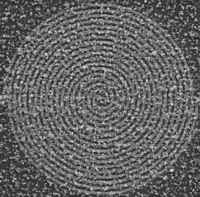
1ARC Seibersdorf research GmbH, Nano-Systemtechnologien, Donau-City-St. 1, A-1220 Vienna, Austria
2Department of Physics, University of Bielefeld, Universitätsst. 25, D-33615 Bielefeld, Germany
3Department of Biology, University of Bielefeld, Universitätsst. 25, D-33615 Bielefeld, Germany
e-mail: Joerg.Schotter@arcs.ac.at
